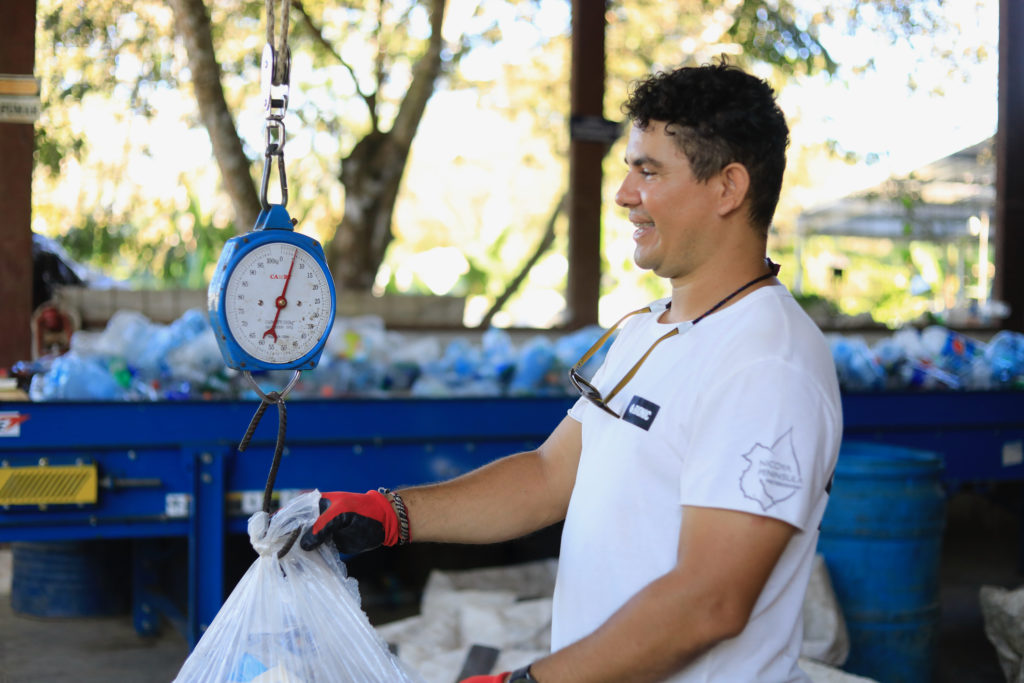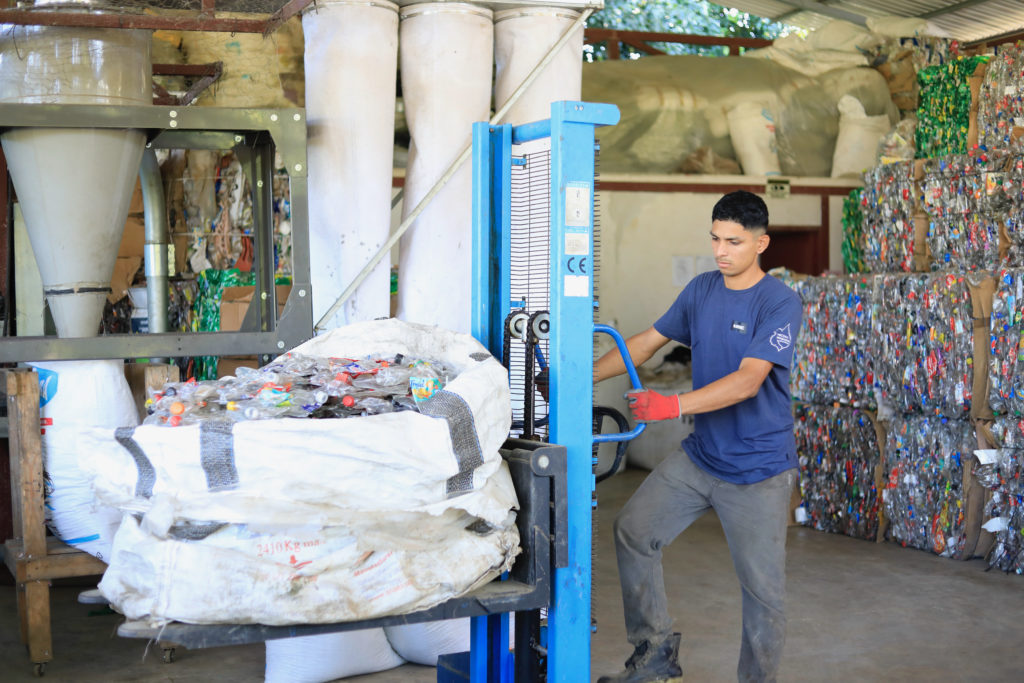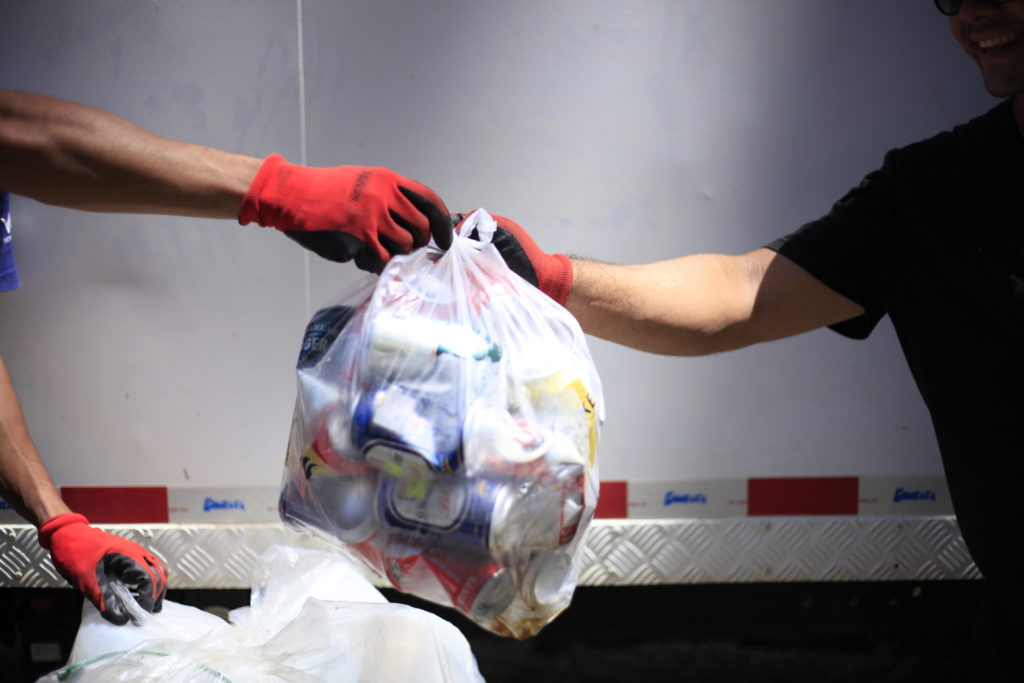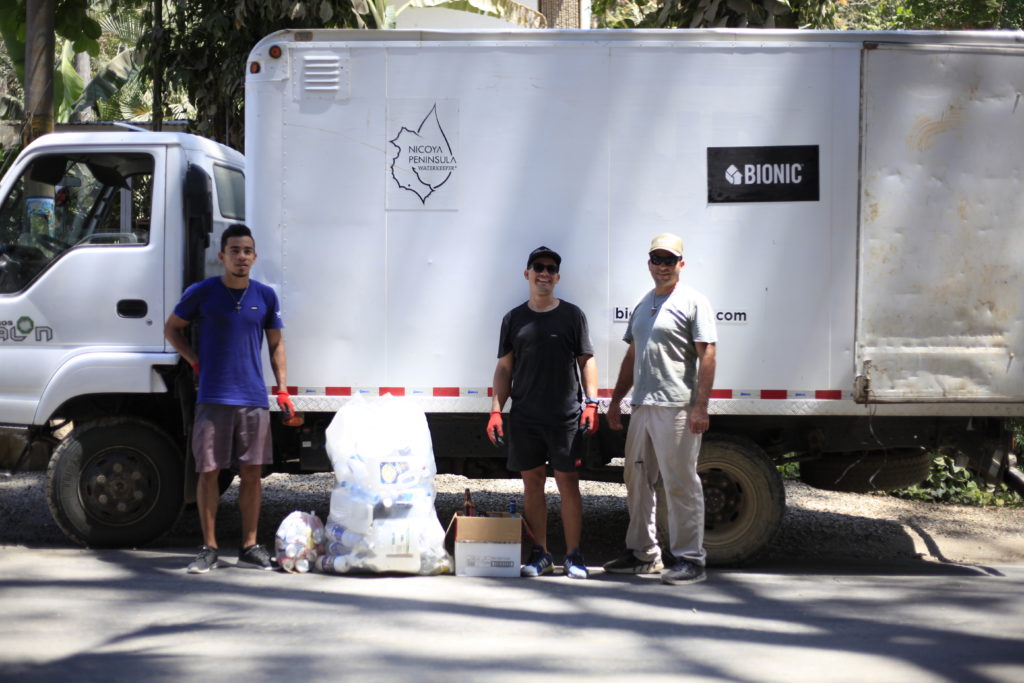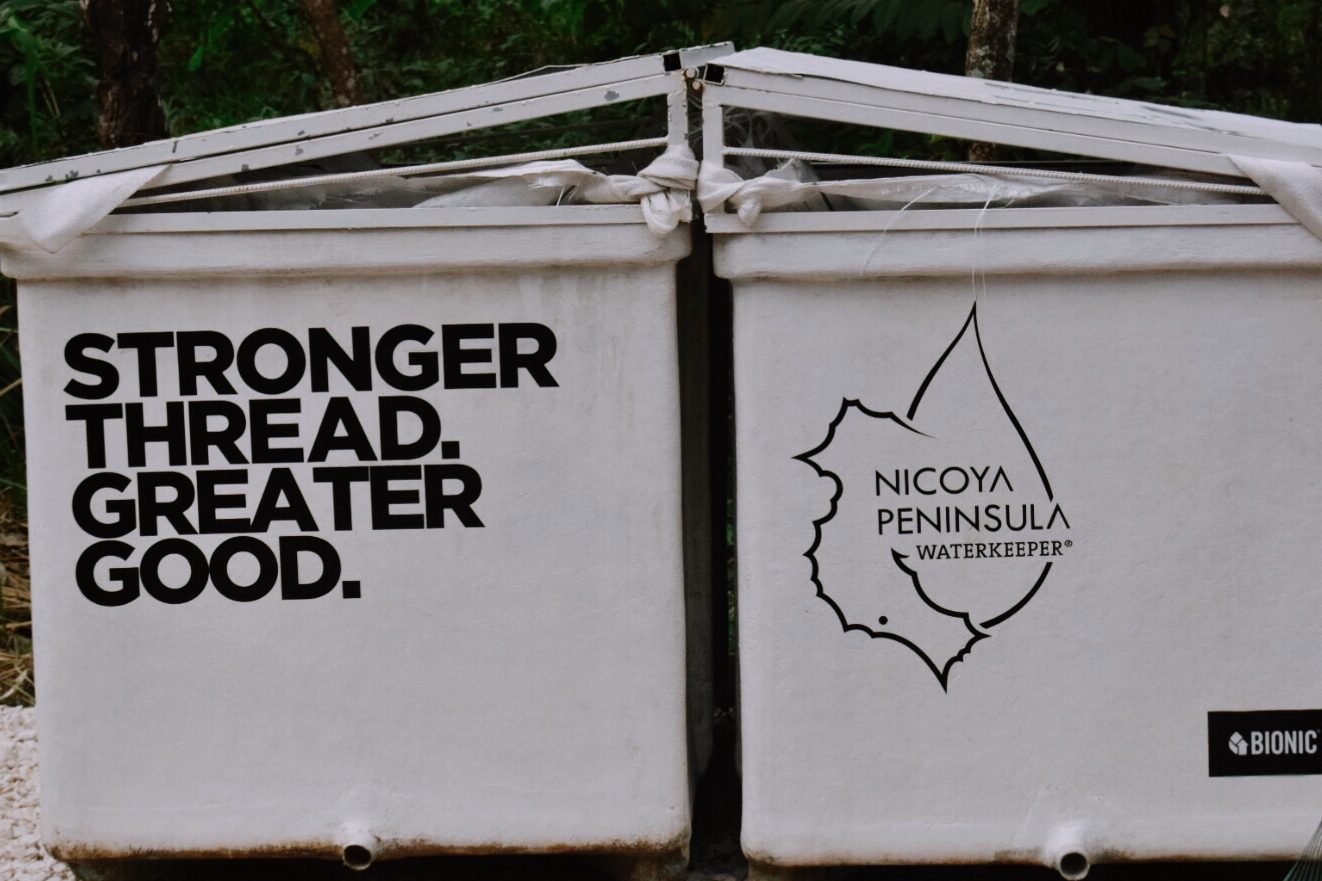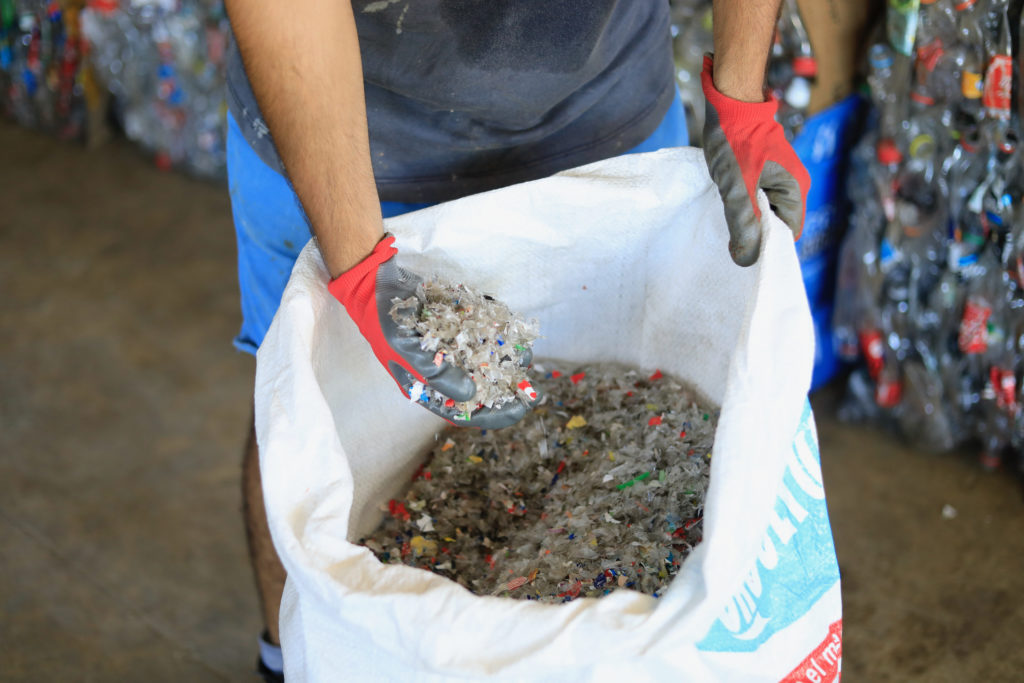-English version bellow-
Con un poco más de 10 años de existir en el Sur de la Península, Nicoya Peninsula Waterkeeper® nació y crece constantemente para dar solución a problemáticas relacionadas a la contaminación del agua. Como uno de sus principales enfoques, se ha venido trabajando en la gestión integral de los residuos sólidos, entre estos los reciclables.
Durante los primeros años, Waterkeeper® con la ayuda de voluntarios, organizaba campañas mensuales de reciclaje para sensibilizar a la comunidad sobre la necesidad de disminuir el consumo de materiales innecesarios y la importancia de reciclar. Sin embargo, ante la inexistencia de una infraestructura y un sistema de recolección a nivel distrital, las limitaciones para poder manejar estos residuos eran evidentes, al punto de que en varias ocasiones se llegó a convertir en crisis sanitaria.
Ante esta necesidad, en el 2018, pudimos construir el Centro de Reciclaje Waterkeeper-BIONIC® gracias al financiamiento de la empresa BIONIC® y al Vivero Lacón. A partir de este momento, contando con la infraestructura, la maquinaria y equipo básico, el proyecto ha venido prosperando progresivamente.
En un inicio, Waterkeeper solo contaba con 3 empleados para recolectar, separar, embalar, triturar, acopiar, etc. A medida que más usuarios se han ido afiliando al proyecto, casi 5 años después, hemos ido creciendo brindando empleo a 12 personas.
Además, hemos ido ampliando las rutas de recolección e instalando estaciones de reciclaje en distintos sectores del distrito de Cóbano, ofreciendo servicio a más de 700 usuarios, lo cual nos llena de satisfacción porque poco a poco se ha logrado el cambio de hábitos hacia una cultura más sostenible. Gracias a ello, hemos podido recuperar cerca de 850 toneladas de residuos inorgánicos valorizables, lo cual contribuye a su vez a disminuir los costos municipales para recolección, transporte y disposición en rellenos sanitarios, no dejando de lado los beneficios ambientales y de salud que esto conlleva.
Sin duda, este proceso no ha sido fácil, existen también varias limitaciones que dificultan los alcances del proyecto. Dentro de ellos, los bajos precios del mercado y los altos costos de operación. Solo por dar un ejemplo, el valor de mercado de 1 tonelada de materiales como el tetrabrick, la hojalata o el vidrio no supera los 20 mil colones (US$40). Aunque por el aluminio y el plástico se paga un poco más, los costos operativos son más altos dadas las distancias, la condición de los caminos, pagos de impuestos, cargas sociales y demás. De no ser por las donaciones que recibimos, Waterkeeper no podría brindar el servicio de forma gratuita para las comunidades.
Otro de los retos que enfrentamos es el robo de materiales a manos de recolectores informales que, lejos de contribuir con soluciones, fomentan otras problemáticas como la injusticia social, ya que estos recolectores son mal pagados por compradores que no pagan salarios justos ni brindan condiciones dignas de empleo. También fomenta el vandalismo (rompiendo estaciones de reciclaje, robando equipos y materiales), y problemas sanitarios (rompiendo bolsas y esparciendo la basura), entre otros problemas socio-ambientales asociados.
La falta de consciencia por parte de algunos usuarios también obstaculiza las operaciones. El uso que la población le da a las estaciones podría mejorar al respetar las indicaciones de cómo entregar el material (limpio y separado) y de cuáles materiales sí recibimos y cuáles no. La entrega de materiales sucios y revueltos incrementa los costos de operación, disminuye la capacidad de acopio y compromete la sanidad de los trabajadores. Si nos dejan en las estaciones tipos de residuos que no podemos procesar en nuestro centro de acopio, como por ejemplo chatarra, materiales de construcción, cartón, electrónicos y otros no reciclables, nosotros tenemos que pagar por el traslado y disposición de esos materiales en rellenos sanitarios. Si nos entregan vidrios rotos revueltos o bolsas muy pesadas con vidrio, se incrementa la posibilidad de accidentes y se dificulta poder manejar estos residuos. Les invitamos a respetar las indicaciones para que la recolección y procesamiento de los reciclables sea eficiente y que la comunidad continúe beneficiándose de este servicio.
Existen muchas fortalezas y oportunidades que hacen de este proyecto algo único y excepcional a nivel nacional. Sin la contribución de BIONIC®, este proyecto no sería posible. El trabajo colaborativo con otros recicladores y grupos de base (Grupo de Mujeres de Cabuya, Proyecto-L-Eco, Jakera, Proyecto CAM, ADIs, entre otros), fortalece el trabajo en red. La posibilidad de transformar plásticos en productos de calidad (“upcycling”) como textiles y madera plástica, los cuales han sido retornados en parte a las comunidades en forma de estaciones de guardavidas y uniformes escolares, contribuye a su vez a alcanzar metas hacia una economía circular y el logro de los objetivos del desarrollo sostenible.
El incremento de negocios y residencias comprometidas con el cambio nos llena de esperanza. Sabemos que no es una tarea fácil, pero estamos segur@s que los cambios se logran con el compromiso de tod@s, por ello agradecemos profundamente a cada un@ de los que han hecho posible este proyecto para el beneficio de todo el distrito.
Waterkeeper-BIONIC Recycling Project: Behind the scenes
NP Waterkeeper® was created over ten years ago and continues growing and providing solutions to problems related to water pollution. One of its main focuses has been providing better solid waste management solutions.
Initially, with the help of volunteers, Waterkeeper® used to organize monthly recycling campaigns aiming at raising awareness on the importance of reducing the consumption of unnecessary materials and recycling. It was a good initiative, but not nearly enough to meet the needs. The lack of an appropriate waste collection system, insufficient infrastructure, population growth, and the population‘s low level of awareness were a recipe for repeated trash crises.
Given this need, thanks to the financial contribution of BIONIC® and Lacón Plant Nursery, in 2018, we were able to build the Waterkeeper-BIONIC® Recycling Center. With the infrastructure, machinery and basic equipment, we started our first recyclables collection route in January 2019.
At first we had 3 employees to collect, sort, pack, bale, store, etc., but thanks to the fact that more and more users have joined the project, almost 5 years later, we have grown, providing employment to 12 people.
In addition, we have been expanding the collection routes and installing recycling stations in different points of the Cóbano district, offering service to more than 700 users, which fills us with satisfaction because little by little the change in habits towards a more sustainable culture has been achieved. Thanks to this, we have been able to collect over 850 tons of recyclable inorganic waste, which in turn contributes to reducing municipal costs for collection, transportation, and disposal in sanitary landfills, in addition to the environmental and health benefits that this entails.
It is no secret that this process has not been easy, there are also several limitations that hinder the scope of the project. Among them, the low market prices and the high operating costs. Just to give an example, the value of 1 ton of materials such as tetrabrick, tin cans, or glass does not exceed 20,000 colones (US$40). Although the price for aluminum and plastic is a little bit more, the operating costs are still significantly higher given the distances, the condition of the roads, tax payments, social security charges, space for storage and processing, and so on. If it were not for the donations and contributions, we would not be able to provide this free service to the communities.
Amongst the other challenges we face is the theft of materials by informal collectors, which, far from contributing to solutions, fosters other problems such as social injustice, since these collectors are poorly paid by buyers who do not pay fair wages or provide decent conditions of employment. It also encourages vandalism (breaking recycling stations, stealing equipment, and materials), and sanitary problems (breaking bags and spreading garbage), among other associated socio-environmental problems.
The lack of awareness of some users also hinders operations. Some people do not sort the materials properly, give dirty recyclables or mix trash with recyclables. This increases operating costs, decreases the collection capacity, and compromises the health of the workers. The use that the population gives to the recycling stations could be improved by respecting the guidelines and the types of materials we do receive. The recycling stations are there for the community to leave the types of waste we have found a solution for. If people leave waste that we can not process in our recycling center, such as scrap metal, construction materials, cardboard, electronics, and other non recyclable materials, we have to pay for it to be taken to a landfill. Very heavy glass bags or broken glass bags increase the possibility of accidents and makes it difficult to manage this waste. We invite the community to respect the guidelines so that the recyclable collection and processing system works efficiently and that the community would be able to continue to benefit from it.
There are many strengths and opportunities that make this project unique and exceptional on a national level. Without BIONIC’s contribution, this project would not be possible. Also, collaborative work with other recyclers and grassroots groups (Cabuya Women’s Group, Proyecto-L-Eco, Jakera, Proyecto CAM, ADIs, among others), strengthens networking. The possibility of transforming plastics into quality products (“upcycling”) such as textiles and plastic wood, which have been returned in part to the communities in the form of lifeguard stations and school uniforms, contributes to achieving goals towards an economic circularity and the achievement of sustainable development goals.
The increasing commitment of businesses and houses to change fills us with hope. We know that it is not an easy task, but we are sure that the changes are achieved with everyone’s commitment. For this reason, we are deeply grateful to each and every one of you who has made this project possible for the benefit of the entire district.
